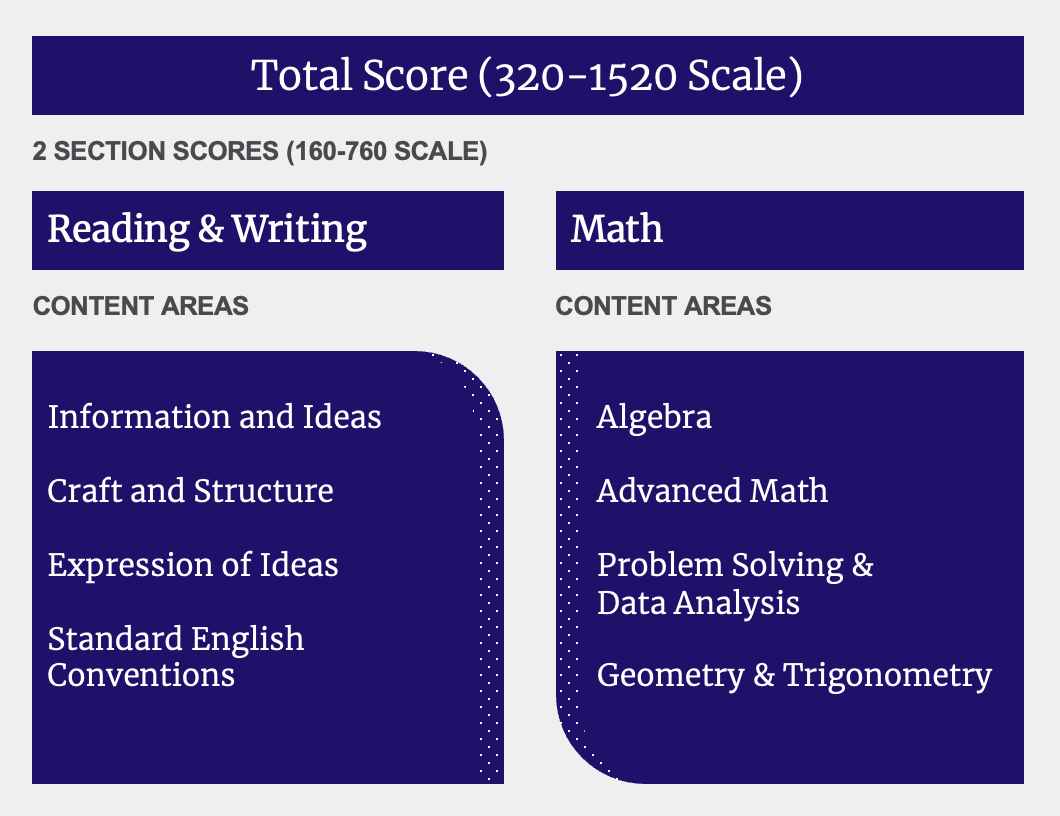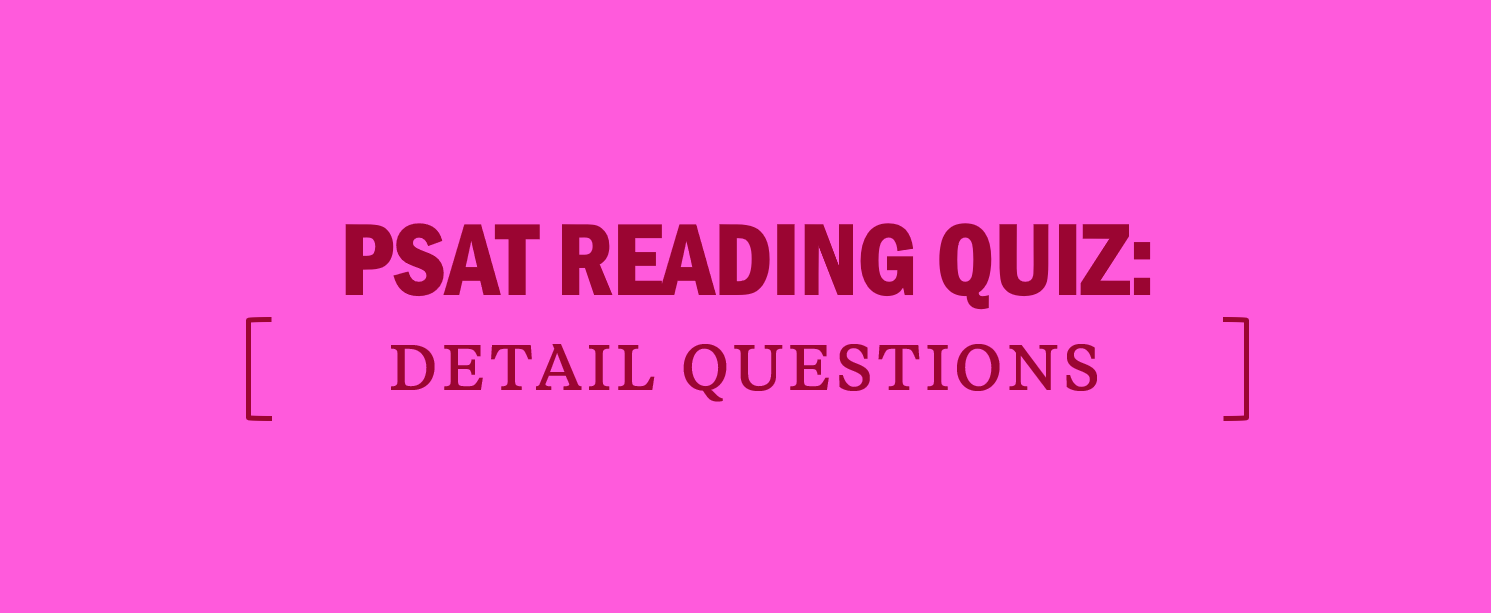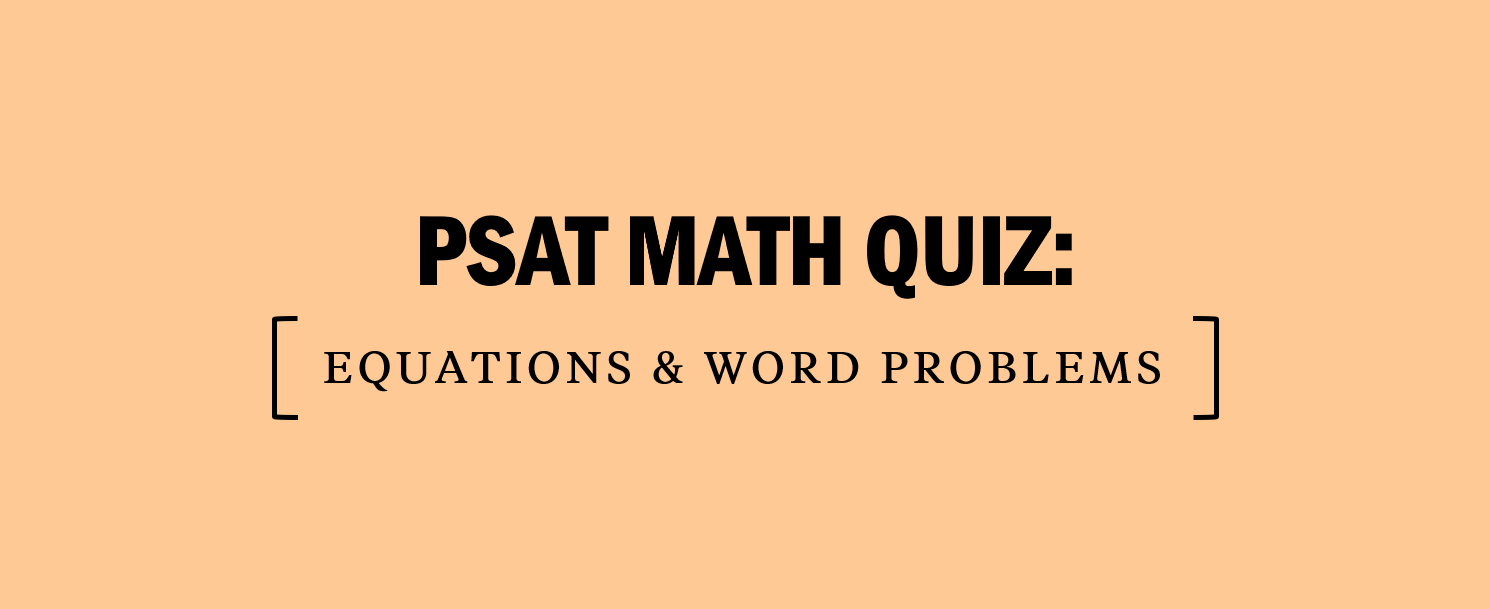What Does Your PSAT Score Mean for the SAT or ACT?
The PSAT/NMSQT, or Preliminary SAT/National Merit Scholarship Qualifying Test, is mostly a practice version of the SAT, but it can also lead to money for college through the National Merit Scholarship Program. In addition to using your PSAT score to compete for scholarships, many students use their PSAT performance to help predict their scores on the SAT and the ACT. You can also think of the PSAT as a diagnostic exam for the SAT or ACT; you can use your results and score report to construct a study plan for your next college entrance exams.
[ RELATED: SAT Tips, Study Plans, and Practice • ACT Tips, Study Plans, and Practice ]
How is the PSAT Scored?
Your total PSAT score will be between 320 (lowest) and 1520 (highest). The exam is scored using a combination of adaptive testing and item response theory (IRT) pattern scoring.
This approach aims to provide an accurate and efficient assessment of your knowledge and skills. Remember: there is also no wrong-answer penalty on the PSAT, which is why it’s important to answer every question—even if you have to guess!
[ KEEP READING: What’s a Good PSAT Score? ]
What’s included in PSAT score reports?
An official PSAT score report is provided for every test-taker. Your score report will include:
- Section Scores: Your Reading & Writing score and Math score, each with a range of 160-760.
- Total Score: The sum of your two section scores, ranging from 320-1520.
- Selection Index Score: Used for National Merit Scholarship Program consideration, calculated as [(2 × Reading & Writing Score) + Math Score] / 10, ranging from 48-228.
- Percentile Rankings: Percentiles that allow you to compare your scores to those of other test takers. For example, a student with a percentile of 63 has earned a score better than 63 percent of that year’s test takers.
- Knowledge and Skills: Reports of how you performed on each of the eight content areas on the PSAT (see graphic below).
Students in the U.S. will also receive a Career Insights Snapshot, listing growing careers in your state that connect to your skills.

How to Use Your PSAT Score to Predict Your SAT Score
The PSAT is created and administered by College Board, the maker of the SAT. Since it is considered to be a Preliminary SAT, your score on the PSAT is meant to be a solid predictor of how well you would do on the SAT if you took it on the same day. But there are a couple of caveats.
The maximum score on the PSAT is 1520, whereas the top score on the SAT is 1600. So, a score of 1100 on the PSAT, for example, is a good indicator that you would score 1100 on the SAT if you took it on the same day. However, because the SAT covers a higher level of content than the PSAT, scores above 1520 cannot be predicted—the PSAT does not test content that makes up those 80 points.
Typically, there are at least a few months between when students take their PSAT and SAT. You can use this time to effectively prepare for the SAT. Use your PSAT score report, including your section scores and the Knowledge and Skills reports of your performance for each content area, to help you identify your areas of opportunity—the topics you should focus on as you prep for the SAT. Be sure to take an SAT Practice Test to help you further focus your preparation. With dedicated SAT prep, you are likely to improve your PSAT performance when you take the SAT.
[ READ NEXT: What’s a Good SAT Score? ]
How to Use Your PSAT Score to Predict Your ACT Score
The ACT is scored completely differently from the SAT or PSAT. If you take the Enhanced ACT in 2025, the new ACT composite score will be calculated using English, Math, and Reading scores but will continue to be on a scale from 1 (lowest) to 36 (highest). The ACT has three standard multiple-choice sections (English, Math, and Reading) that all have scores provided separately on a scale of 1–36.
Both the Writing and Science sections are optional on the Enhanced ACT. Students taking the Writing section will receive a separate score on a scale of 2–12. Students taking the Science section will receive a Science score between 1 and 36 on their report. Additionally, a STEM score, combining performance on the Science and Math sections, will be reported.
Unlike the ACT, the SAT and PSAT do not include an optional Science section. However, the ACT’s Science section primarily tests your reading comprehension and data analysis skills, not your outside science knowledge, so your performance on PSAT Reading & Writing questions may give you insight into how you would do if you choose to take the ACT Science section.
Just like with the SAT, your PSAT results can inform your ACT prep strategy. Once again, on your PSAT score report, review both your section scores and the Knowledge and Skills content area results. This information will help you pinpoint your strengths and areas of opportunity to prioritize before taking the ACT. Take an ACT practice test to familiarize yourself with the exam and further identify areas for improvement. By referencing your predicted ACT score (see conversion chart below) and your detailed PSAT score report, you can craft a personalized and effective ACT study plan that aligns with your target score.
[ RELATED: What’s a Good ACT Score? ]
PSAT Score to ACT Score Conversion
In 2018, the ACT and College Board released a concordance for SAT and ACT scores, establishing a relationship between scores on the two tests. Since you can use your PSAT score to predict your SAT score, you can also now predict your ACT score. We’ve used information from the concordance to predict ACT scores using PSAT scores below. Remember, the maximum score you can get on the PSAT is 1520, so ACT scores above 34 cannot be predicted because, like the SAT, the ACT tests a higher level of content than the PSAT. See how your PSAT score correlates to an ACT score.
See how your PSAT score correlates to an ACT composite score (PSAT score range → ACT score).
- 590 – 610 → 09
- 620 – 640 → 10
- 650 – 680 → 11
- 690 – 720 → 12
- 730 – 770 → 13
- 780 – 820 → 14
- 830 – 870 → 15
- 880 – 910 → 16
- 920 – 950 → 17
- 960 – 980 → 18
- 990 – 1020 → 19
- 1030 – 1050 → 20
- 1060 – 1090 → 21
- 1100 – 1120 → 22
- 1130 – 1150 → 23
- 1160 – 1190 → 24
- 1200 – 1220 → 25
- 1230 – 1250 → 26
- 1260 – 1290 → 27
- 1300 – 1320 → 28
- 1330 – 1350 → 29
- 1360 – 1380 → 30
- 1390 – 1410 → 31
- 1420 – 1440 → 32
- 1450 – 1480 → 33
- 1490 – 1520 → 34
See how would you do on the PSAT by taking our short quiz.
Written by Kaplan experts, reviewed by Melissa McLaughlin, Pre-College Content Developer and Heather Waite, Director of Content and Curriculum, Pre-College.






